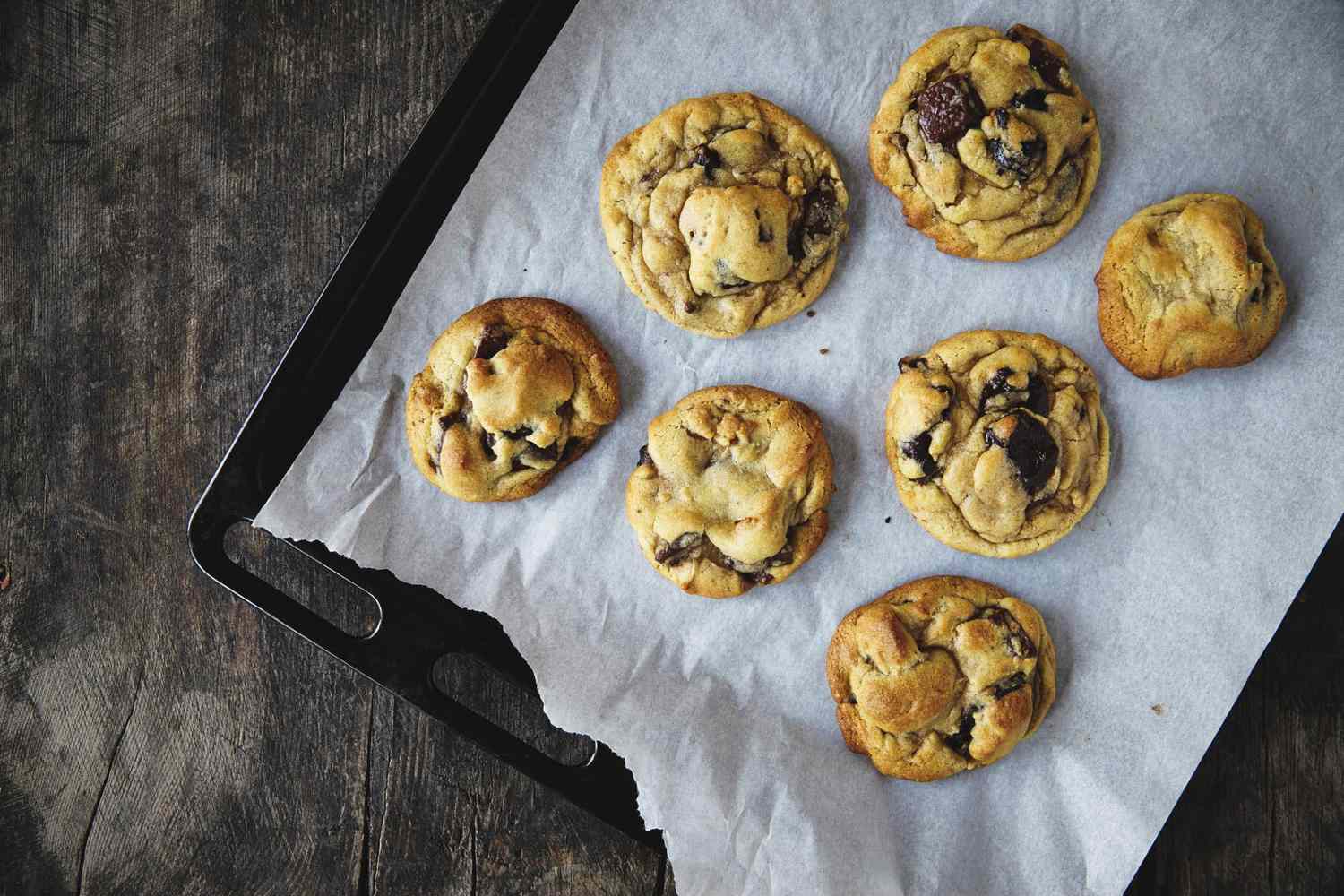Baking is a science and an art, but even experienced home bakers can encounter easily avoidable problems. Here are some baking hacks that will help you make your next batch of treats a success.
Always test out your cake or cookie batter before baking, recommends Sarah Orrock of Wild Yums. This will save you from throwing out an entire batch if it doesn’t turn out as expected.
Keep Your Baking Sheets Clean
You’ll often find your baking sheets covered in that familiar patina of burnt-on grease. The good news is that they’re easier to clean than you think. Whether baking cookies or cooking a full sheet pan dinner, a few simple hacks can help keep your kitchen workhorses looking new.
The simplest method begins with two products you likely already have in your home. Plug up your sink, fill it with hot water, and add half a cup of baking soda and white vinegar. Baking soda and vinegar live on opposite ends of the pH scale, and when they combine, a chemical reaction occurs that’ll lift away grease and food with ease.
Pour the solution over your baking sheet and let it sit for up to an hour (overnight is recommended for more stubborn stains). Scrub the pan using a nylon pad, sponge, or brush, and wash thoroughly with warm water. Rinse and leave to dry.
Keep Your Baking Sheets Cool
Baking sheets (also called cookie sheets) are versatile kitchen workhorses, from roasting root vegetables to baking cookies to making full sheet-pan dinners. But even with careful cleaning, these pans can develop a warped shape. When this happens, it can affect your cookware’s performance and make it difficult to bake evenly.
The good news is that there are several easy ways to keep your baking sheets cool and warp-free. The key is to give your baking sheets a little extra time to cool after you take them out of the oven.
When you remove your baking sheets from the oven, place them on a wire cooling rack until completely cool. This can help prevent your baking sheets from warping and save you a few minutes of inactive cooking time. Once your baking sheets are completely cool, they can be easily reshaped to their original, flat shape.
Keep Your Baking Sheets Warped Free
Have you ever placed a prized pan in the oven, heard a loud thudding sound, then looked down to find your baking sheet had gone all wavy? This can be very frustrating, but it’s important to understand what causes your baking sheets to warp and take steps to prevent it from happening in the future.
Some common reasons for warping include letting a pan come to room temperature before placing it in the oven, overloading it with heavy or several layers of food, and extreme temperature changes. According to Allrecipes, if a pan is exposed to extreme heat and cold air quickly, the metal can expand rapidly in places not covered by food or a solid surface.
To avoid this, place your baking sheets on a solid and sturdy surface after removing them from the oven and allow them to cool gradually. Parchment paper or silicone baking mats can help keep your pans from warping.
Keep Your Baking Sheets Clean
Baking sheets endure a lot of abuse from hot ovens and sticky sweets. Greasy splatters, burnt-on food scraps and scorch marks can make sheet pans look old and tired even after they’ve been washed. Often, they need to be revived with a few simple cleaning tricks.
One of the most popular ways to clean a baking sheet involves vinegar and baking soda. Just sprinkle baking soda on the pan and pour some vinegar. The acidity in the vinegar will fizz and loosen up stuck-on grease. Use a scrubber to wipe away the grime, and wash the pan with soap and water.
Keeping your baking sheets clean can also be accomplished by lining them ahead of time with aluminum foil, parchment paper or a reusable silicone mat. These liner options prevent messes from sticking and make removing grease, food scraps or stains easy. The best way to avoid having to do a lot of heavy-duty scrubbing, however, is to prevent messes from happening in the first place by covering your baking sheets with tinfoil or parchment paper when cooking.
